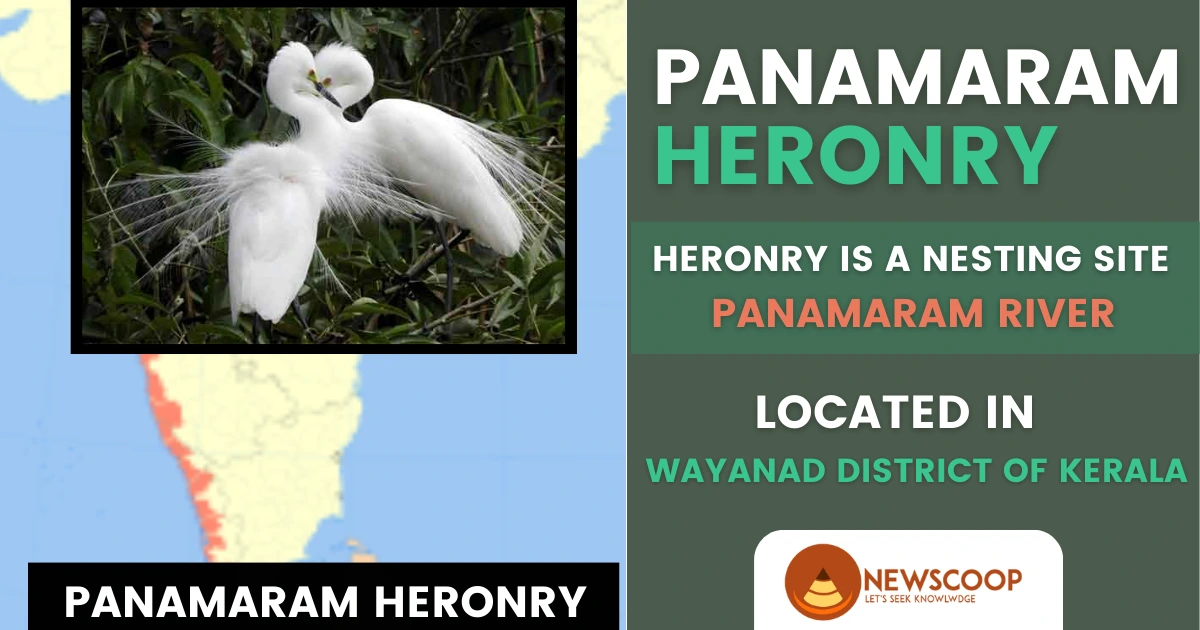Panamaram Heronry in Kerala
Nestled in the heart of the Western Ghats, the Panamaram Heronry stands as a testament to the incredible biodiversity that India has to offer. Located in the Wayanad district of Kerala, this hidden gem is a sanctuary for a plethora of avian species, with its scenic landscape and tranquil surroundings.
In this article, we’ll delve into the wonders of the Panamaram Heronry, exploring its diverse wildlife, unique ecosystem, and the efforts taken to conserve this natural marvel.
| Attribute | Information |
|---|---|
| Location | Wayanad district, Kerala, India |
| Area | Approximately 10 acres |
| Habitat Type | Wetlands, mixed deciduous and evergreen |
| Main Bird Species | Painted Storks, Grey Herons, Little Cormorants, Openbill Storks |
| Breeding Season | November to March |
| Nesting Sites | Trees along the Panamaram River |
| Access | Road access from Kalpetta |
What is Panamaram Heronry?
The Panamaram Heronry is a natural habitat located in the Wayanad district of Kerala, India. It serves as a nesting site for a diverse range of bird species. The heronry is situated along the banks of the Panamaram River, a tributary of the Kabini River. It covers an area of approximately 10 acres and is characterized by lush greenery, a mix of deciduous and evergreen forests, and serene water bodies.
What is Heronry?
A heronry is a nesting site where groups of herons and other wading birds come together to raise their young. These sites are usually located near water bodies and can range from a few nests to hundreds. The nests are built high in trees, reed beds, or cliffs using sticks and twigs.
During the breeding season, the heronry is bustling with activity as birds care for their nests and chicks. These communal nesting sites are crucial for the conservation of these bird species.
About Herons:
- Herons are long-legged wading birds known for their elegant appearance.
- They are carnivorous, primarily feeding on fish.
- Herons are skilled hunters, using their sharp bills to catch prey.
- They nest in colonies, often in tall trees near water bodies.
- Both parents share responsibilities for incubating eggs and raising chicks.
- There are over 60 species of herons worldwide, each adapted to different environments.
- Some heron species are migratory, while others are sedentary.
- Conservation efforts focus on protecting habitats and nesting sites.
- IUCN Status: Least Concern
Avian Diversity
One of the most captivating features of the Panamaram Heronry is its diverse avian population. The heronry serves as a nesting site for a multitude of bird species, including:
- Painted Storks: These elegant birds, known for their distinctive pink plumage and striking black markings, are a common sight at the Panamaram Heronry. They create large, intricately woven nests on the treetops, providing a captivating spectacle for visitors.
- Grey Herons: With their stately appearance and long necks, grey herons are a prominent presence in the heronry. They are often seen wading in the shallow waters, patiently waiting for their prey.
- Little Cormorants: Recognizable by their jet-black plumage and distinctive hooked beaks, little cormorants are a delight for bird enthusiasts. They are adept at diving for fish and can be observed engaging in synchronized fishing expeditions.
- Openbill Storks: These medium-sized waders are named for the distinctive gap in their bills, which aids in extracting mollusks and other aquatic creatures from their shells. They are a unique addition to the avian community at the heronry.
Breeding Season
The breeding season at the Panamaram Heronry typically spans from November to March, coinciding with the post-monsoon period when water levels are ideal for feeding and nesting.
During this time, the trees come alive with a flurry of activity as birds build and tend to their nests. Visitors can witness the meticulous care the parent birds take in nurturing their young, as well as the synchronized flights and fishing expeditions.
Also Read: Indus River Dolphin: IUCN Status & Threats
Conservation Efforts & Challenges
Preserving the delicate ecosystem of the Panamaram Heronry is of paramount importance. The site faces various challenges, including habitat degradation, human disturbances, and water pollution. Conservationists, local communities, and government agencies have joined hands to implement several initiatives aimed at safeguarding this natural wonder. These efforts include:
- Awareness Campaigns: Educational programs and awareness campaigns have been organized to highlight the significance of the heronry and promote responsible tourism practices.
- Habitat Restoration: Measures have been taken to restore and conserve the surrounding habitat, including afforestation drives and water quality monitoring.
- Regulating Visitor Access: Controlled access and visitor guidelines have been put in place to minimize human disturbances to the nesting birds.
So, this encapsulates the fascinating world of herons, from their graceful hunting techniques to their crucial role in ecosystems. These elegant birds continue to inspire awe and admiration among bird enthusiasts and stand as a testament to the rich avian diversity of our planet.
Thank You!

